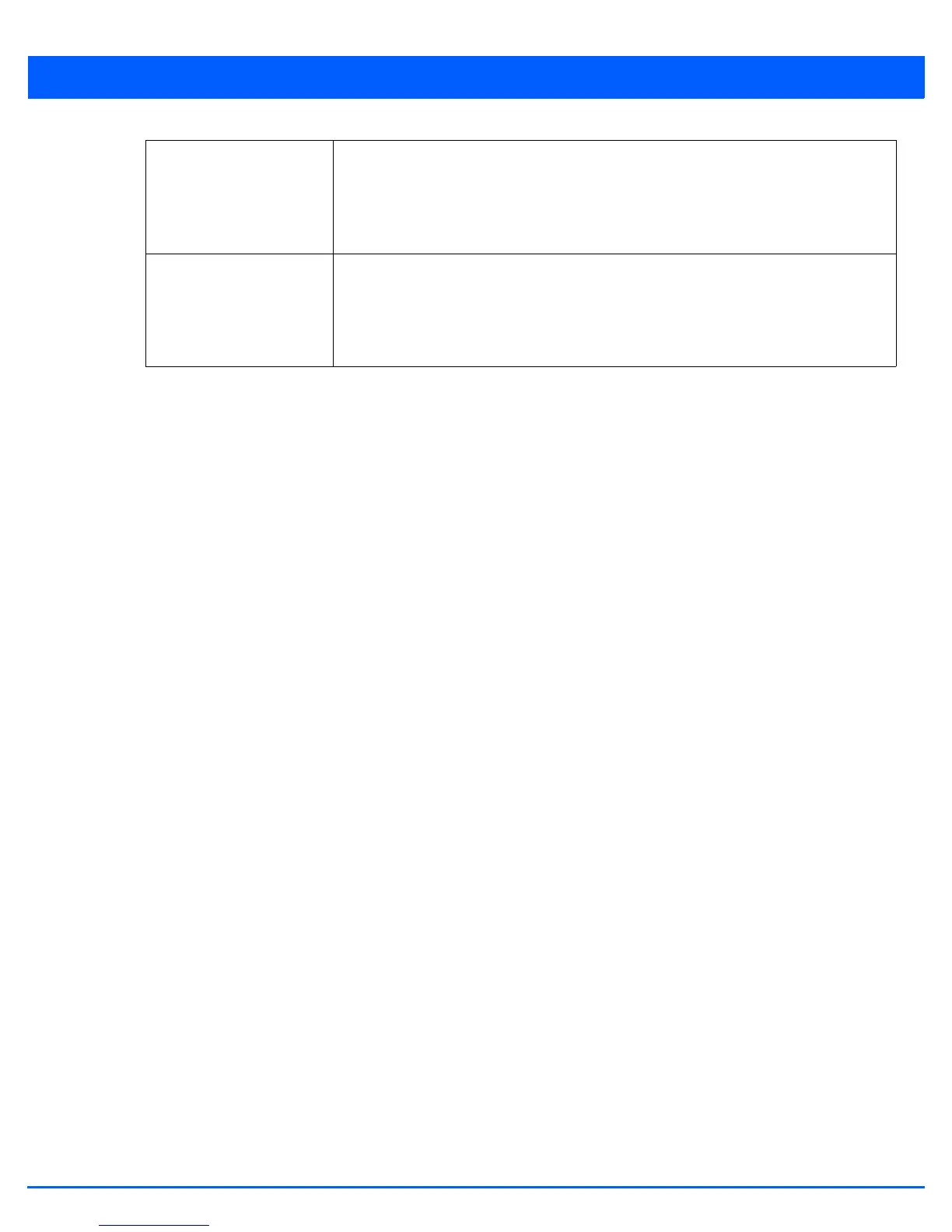Services Configuration 9 - 17
8. Use the IP Address Ranges and Excluded IP Address Ranges fields to define the range of included (starting and
ending) IP addresses and excluded (starting and ending) IP addresses for this particular pool.
Refer to the IP Address Ranges field and select the + Add Row button at the bottom of the field to add a new range. At
any time you can select the radio button of an existing IP address range and select the Delete icon to remove it from the
list of those available.
Enter a viable range of IP addresses in the IP Start and IP End columns. This is the range of addresses available for
assignment to DHCP supported wireless clients within the network.
Select the Create icon or Edit icon within the Class Policy column to display the DHCP Server Policy screen if a class
policy is not available from the drop-down menu.
Refer to the Excluded IP Address Range field and select the +Add Row button. Add ranges of IP address to exclude
from lease to requesting DHCP clients. Having ranges of unavailable addresses is a good practice to ensure IP address
resources are in reserve. Select the Delete icon as needed to remove an excluded address range.
9. Select OK to save the updates to the DHCP Pool Basic Settings tab. Select Reset to revert to the last saved
configuration.
10. Select the Static Bindings tab from within the DHCP Pools screen.
A binding is a collection of configuration parameters, including an IP address, associated with, or bound to, a DHCP client.
Bindings are managed by DHCP servers. DHCP bindings automatically map a device MAC address to an IP address using a
pool of DHCP supplied addresses. Static bindings provide the assignment of IP addresses without creating numerous host
pools with manual bindings. Static host bindings use a text file the DHCP server reads. It eliminates the need for a lengthy
configuration file and reduces the space required to maintain address pools.
Lease Time DHCP leases provide addresses for defined times to various clients. If a client does not
use the leased address for the defined time, that IP address can be re-assigned to another
DHCP supported client. Select this option to assign a lease time in either Seconds (1 - 31,
622, 399), Minutes (1 - 527,040), Hours (1 - 8,784) or Days (1 - 366). The default setting is
enabled, with a lease time of 1 day.
Default Routers After a DHCP client has booted, the client begins sending packets to its default router. Set
the IP address of one or a group of routers used to map hostnames into IP addresses
available to DHCP supported clients. Up to 8 default router IP addresses are supported.
Select Alias to use a host alias with the default routers configuration. For more
information see Alias on page 7-34.

